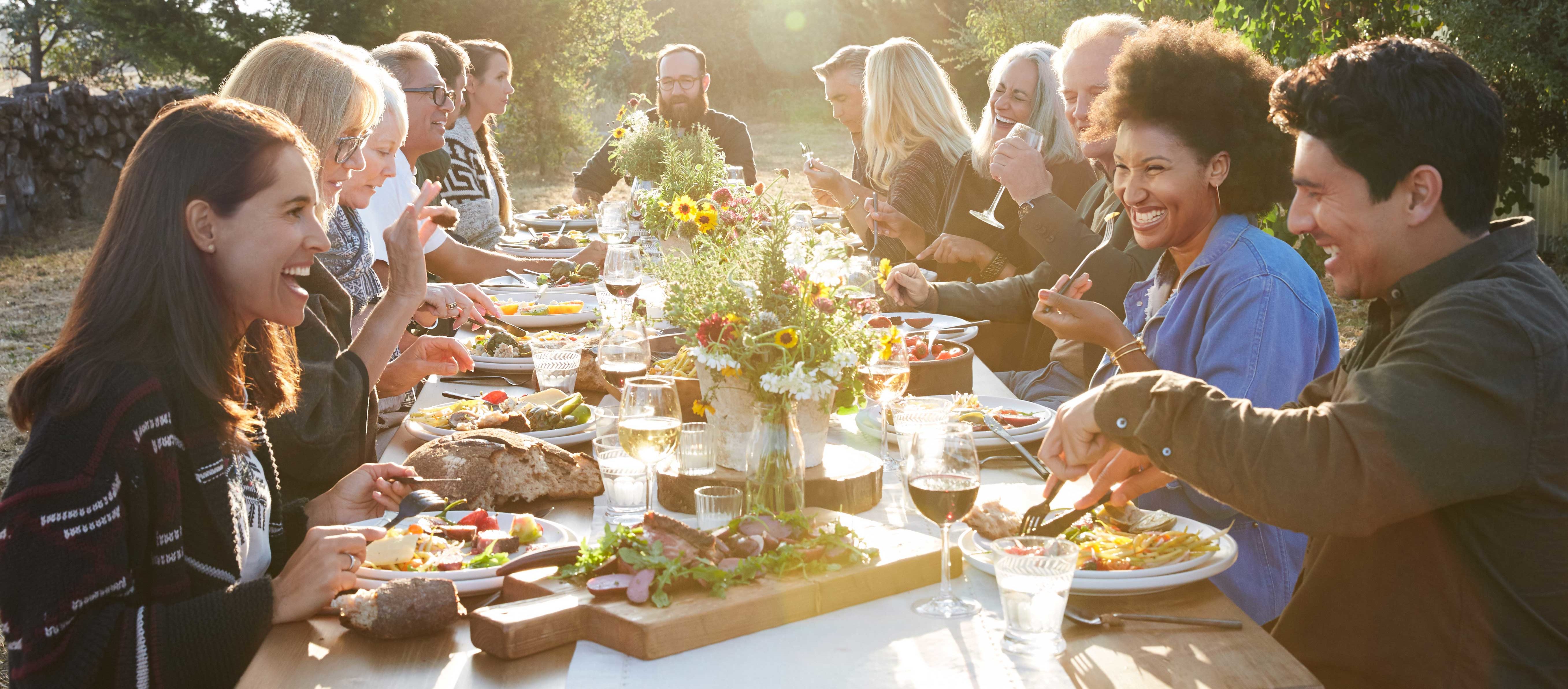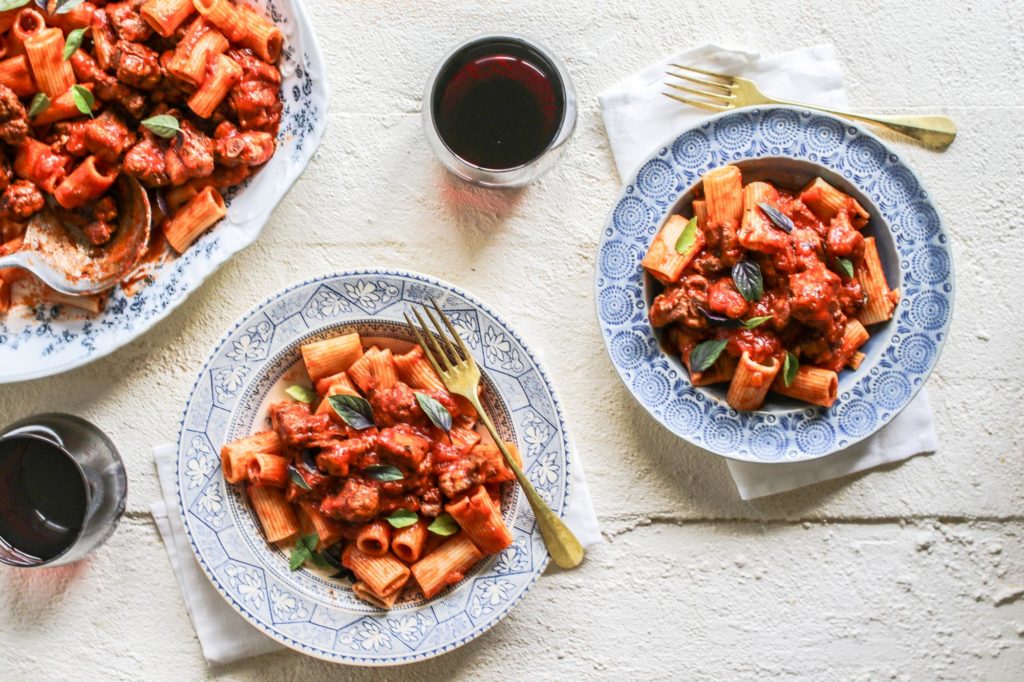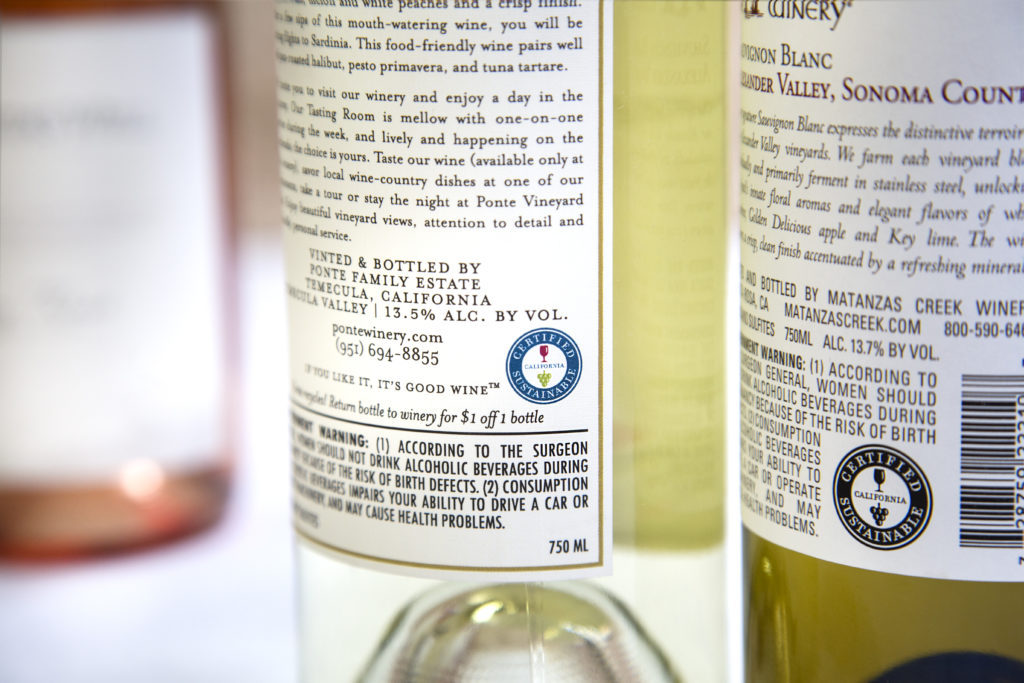The Recipe
Rigatoni with Pork Rib Sugo
The baby back ribs that most people throw on the barbecue make a succulent, rustic pasta sauce. You’ll need a friendly butcher to saw across the ribs for you, but the rest of the method is easy. The sauce (sugo in Italian) reheats well so you can make it a day ahead. Set your formal manners aside here. The best way to enjoy this dish is to nibble the meat off the riblets between bites of pasta. Cutting the meat off would spoil the fun!
Wine suggestion: California Cabernet Sauvignon or California Zinfandel

Ingredients
- 2 pounds baby back ribs, in 1 slab
- Sea salt and freshly ground black pepper
- 2 tablespoons extra virgin olive oil
- 1 yellow onion, minced (about 2 cups)
- 2 large cloves garlic, minced
- 1 can (28-oz/800 g) tomatoes, pureed in a blender
- ¾ teaspoon ground fennel or finely crumbled dried oregano
- 2 sprigs fresh basil
- Pinch baking soda, optional
- 1 pound (450 g) rigatoni or penne
- ½ cup (35 g) freshly grated pecorino romano or Parmigiano Reggiano, plus more for topping
Serves 6
Directions
Ask the butcher to saw the slab of ribs lengthwise into 1-inch wide (25-mm) strips. With a chef’s knife, cut between the ribs to make individual riblets. Season all over with salt and pepper.
In a large, heavy pot, heat 1 tablespoon olive oil over medium heat. Working in batches so as not to crowd the pot, brown the riblets all over, adjusting the heat to prevent burning. Transfer the riblets to a plate as they are browned.
Pour off and discard any fat in the bottom of the pot. Return the pot to medium-low heat and add the remaining 1 tablespoon olive oil. Add the onion and sauté, stirring with a wooden spoon, until the onion is soft and golden brown and the meaty residue on the bottom of the pot has dissolved, about 10 minutes. Add the garlic and cook for about 1 minute to release its fragrance.
Add the tomato puree, fennel, and basil and bring to a simmer. Return the riblets to the pot along with any juices on the plate. Cover partially and adjust the heat to maintain a gentle simmer. Cook until the riblets are tender and the sauce is thick and tasty, about 1-1/2 hours, adding a splash of water occasionally if the sauce gets too thick. Season with salt and more fennel or oregano if desired. Remove the basil sprigs. If the sauce tastes tart, add a pinch of baking soda and cook for 1 minute. The baking soda will neutralize the acidity and make the sauce taste more mellow. Keep the sauce warm over low heat while you cook the pasta.
Bring a large pot of well-salted water to a boil over high heat. Add the pasta and cook until al dente, 10 to 12 minutes. Set aside 1 cup of the hot pasta water, then drain the pasta in a sieve. Return the pasta to the hot pot over medium-low heat. Add the sauce and stir to coat the pasta with the sauce. Remove from the heat, add the cheese, and stir to combine, adding reserved pasta water if needed to moisten. Divide among 6 bowls, top each portion with another sprinkle of cheese, then serve.







